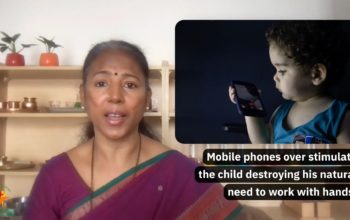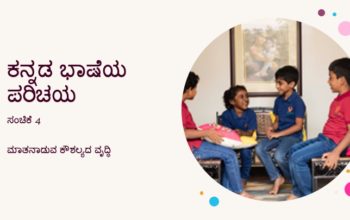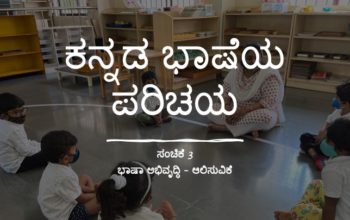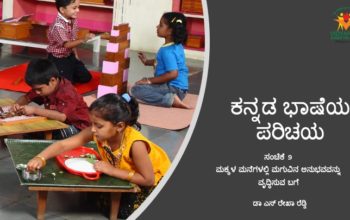Developing responsibility in children is crucial for their growth and success. This guide offers age-appropriate tasks to foster independence and character, from simple chores for toddlers to complex responsibilities for adolescents. Despite the Indian tendency to avoid letting children do small tasks, practical engagement is essential, especially in real-life kitchen activities
Category: Let’s talk Montessori
Vlogging English
3 Essential Requirements of Children below Six Years during Pandemic
When everything was getting back to normal, another lockdown upsets parents, teachers, and children. Although offline and online classes appear to be a norm of the future world, young children below six years get adversely affected. In these trying times, if children below six are provided with the three essential requirements at home, they might be less affected by the present uncertainty and prepared well for schooling.
ಕನ್ನಡ ಭಾಷೆಯ ಪರಿಚಯ, ಸಂಚಿಕೆ 4 Kannada Language Presentation Episode 4 – Development of Speaking Skills
This episode presents activities for the development of the speaking skills of children. The activities include Tell me, tell me, What you saw! Identify the name; where am I?, How did I do?, Activities with nomenclature cards and scenic pictures, the narration of real-life experiences, Magic Corner, Antyakshari, storytelling, story building, conversation, etc.
ಕನ್ನಡ ಭಾಷೆಯ ಪರಿಚಯ, ಸಂಚಿಕೆ ೩ Kannada Language Presentation – Listening: Episode – 3
In developing Kannada language skills, it is essential to allow the children to hear and listen to Kannada as often as possible. This episode presents how to create activities for listening to Kannada in any school.
ಕನ್ನಡ ಭಾಷೆಯ ಪರಿಚಯ: ಸಂಚಿಕೆ 2 Kannada Language Presentation: Episode 2
This episode is about the kind of experiences a Montessori House of Children provides for children below six years. All activities, Exercises of Practical Life, Sensorial, Language and Arithmetic Activities, field trips, introduction to fruits, grains provide an exceptional experience contributing to language development.
Freedom and Discipline
The First thing we notice in a Montessori class is discipline. 30 – 35 children in the Montessori classroom, moving busily minding their own work without the teacher’s instruction.
Four Rules to Display Montessori Materials
The Montessori schools are sending low-cost Montessori materials to keep learning momentum and facilitate active learning at home. Many parents do not know how to arrange them and wonder whether to stack or organise them. If organised, on what basis? There are four rules for displaying the materials as attractive, inviting, and stimulating for the children.
Difference Between Montessori and Traditional Schools
traditional schools. To answer this question in simple terms – in Montessori schools, children learn through play[1]. The children in Montessori schools are free to move around the classroom and choose the activities they want to play with. In contrast, the children in traditional classrooms, sit in one place and copy from the blackboard. Even the best traditional preschools have a limited amount of games or play periods.







